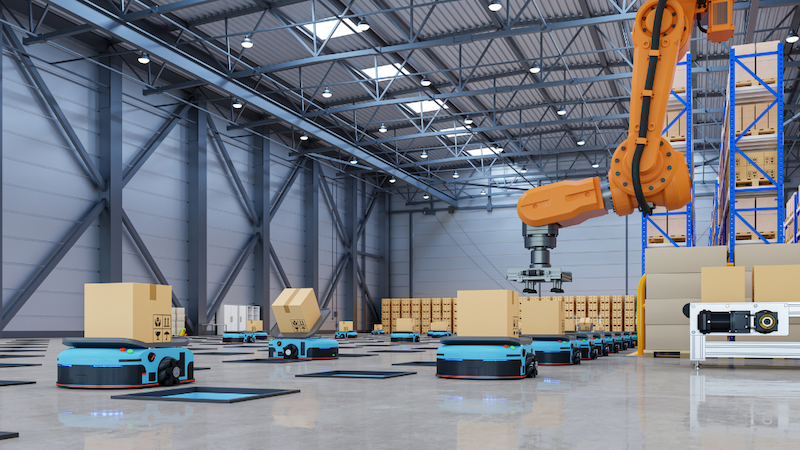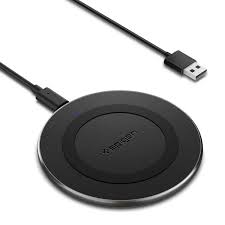The Future of Care: Exploring Emerging Technologies in Robot Maintenance

Strong 8k brings an ultra-HD IPTV experience to your living room and your pocket.
Introduction:
The role of robotics in healthcare has seen tremendous growth in recent years, helping revolutionize surgeries, patient care, rehabilitation, and more. As robots become increasingly integrated into healthcare systems, the maintenance of these complex and precise machines has grown in importance. The future of care in robotic maintenance is not just about fixing machines; it's about enhancing their performance, extending their life, and ensuring that they continue to deliver the highest standards of care. Emerging technologies, including Augmented Reality (AR) for remote robot maintenance, are playing a significant role in shaping this future.
Download FREE Sample of Augmented Reality Market
In this article, we will explore the role of AR in empowering healthcare technicians to provide faster, more efficient, and accurate maintenance for healthcare robots, thus ensuring that robotic systems continue to operate at their best. Additionally, we’ll look at how this technology is poised to redefine the maintenance landscape in healthcare settings.
The Rise of Robotics in Healthcare
Over the last few decades, robots have found their way into almost every corner of healthcare, from surgery and diagnostics to rehabilitation and elderly care. Robots are now used for:
Surgical assistance: Robotic systems like the da Vinci Surgical System help surgeons perform minimally invasive surgeries with greater precision and control.
Robotic prosthetics: Advanced robotic prosthetics allow for more natural and functional limb replacement, significantly enhancing the quality of life for individuals with amputations.
Patient care: Robots like the Pepper robot assist with companionship and basic caregiving tasks for the elderly, while other robots help with physical rehabilitation.
Diagnostics and imaging: Robotic systems are employed in radiology and imaging to provide more accurate diagnostics in complex procedures.
These robots are critical to the healthcare sector's ability to deliver high-quality patient care. However, their advanced nature means that maintenance is crucial to ensure their continued performance.
The Importance of Maintenance in Healthcare Robotics
Robots in healthcare environments must operate flawlessly because they often perform high-stakes tasks that directly impact patient outcomes. Whether it’s a surgical robot or a robot used for rehabilitation, any downtime or malfunction can result in significant consequences. The challenges of maintaining healthcare robots include:
Complex systems: Healthcare robots are complex, consisting of multiple interconnected parts such as sensors, motors, actuators, and software. Diagnosing and maintaining these intricate systems can be time-consuming and challenging.
Highly specialized maintenance needs: The components of healthcare robots, particularly in surgical or diagnostic robots, require regular inspection, calibration, and sometimes specialized training to service properly.
Minimizing downtime: Downtime is critical in healthcare. Patients depend on the timely availability of these robots, especially in environments like hospitals and operating rooms, where precision and functionality are paramount.
To address these issues, new technologies are being incorporated to make the maintenance process easier, faster, and more effective. One of the most promising solutions is Augmented Reality (AR), which offers healthcare technicians powerful tools to perform maintenance and repairs remotely, without being physically present.
Augmented Reality (AR) for Remote Robot Maintenance
Augmented Reality (AR) refers to the technology that overlays digital content—such as images, information, or animations—onto the physical world. This can be done through devices such as smartphones, tablets, smart glasses, or headsets. AR enables users to interact with and manipulate digital information as though it is part of their physical environment.
In the context of robot maintenance, AR has the potential to drastically change how technicians perform repairs and maintenance on complex healthcare robots. By providing real-time, interactive, and remote access to critical information and diagnostic tools, AR can make robot maintenance faster, more accurate, and less reliant on the physical presence of experts.
Key Benefits of AR for Remote Robot Maintenance in Healthcare
1. Remote Assistance and Troubleshooting
In many healthcare facilities, technicians may not always be available to fix robots in person, particularly when dealing with specialized robots that require expert knowledge. Through AR, technicians can connect remotely with experts or support teams who can guide them through maintenance procedures or assist with troubleshooting.
For example, if a surgical robot experiences an issue during an operation, AR can allow an expert from anywhere in the world to provide guidance to a technician on-site, offering step-by-step instructions or visual cues overlaid onto the technician’s view. This eliminates the need for the expert to travel to the location, which saves valuable time and reduces downtime.
2. Real-Time Visual Guidance for Maintenance Tasks
One of the most challenging aspects of robot maintenance is understanding the correct procedures for disassembling and reassembling intricate parts. AR can provide real-time visual guidance that overlays digital instructions onto the technician’s field of view. This could include:
Highlighting specific components that need attention
Displaying step-by-step procedures for troubleshooting or repairs
Showing the exact locations of sensors, wires, or connectors that need to be inspected or adjusted
This eliminates the need for technicians to memorize complex manuals or rely on written instructions, increasing the accuracy and efficiency of the maintenance process.
3. Enhanced Training and Skill Development
AR can also play a key role in training healthcare technicians. New staff or those unfamiliar with a particular robot can use AR to train hands-on, virtually guided by expert systems. This enables technicians to gain practical experience without the risk of damaging equipment or interrupting operations.
For example, a technician could practice performing maintenance tasks on a virtual model of a surgical robot or other healthcare machines, using AR to simulate real-world problems. This not only accelerates the learning curve but also ensures that technicians are well-prepared to handle maintenance issues when they arise in the field.
4. Streamlined Diagnosis and Troubleshooting
AR enhances the diagnostic process by providing real-time data from the robot's sensors, which can be superimposed on the technician’s screen through AR glasses or devices. By accessing this data, technicians can better understand the robot’s operational state and pinpoint potential issues much faster than traditional troubleshooting methods allow.
For instance, AR can display information like:
System error codes
Component temperature readings
Battery life and performance metrics
Sensor activity logs
This makes it easier for healthcare technicians to identify problems early, potentially preventing minor issues from escalating into major failures.
5. Increased Efficiency and Reduced Downtime
In a healthcare setting, time is of the essence. Robots must be fully operational to assist with tasks like surgery, diagnostics, and rehabilitation. With AR, technicians can quickly access the information they need to make informed decisions, ensuring that repairs and maintenance tasks are completed swiftly and accurately. By reducing downtime, AR contributes directly to improving operational efficiency in healthcare settings, allowing healthcare providers to offer uninterrupted services to their patients.
6. Cost Savings
The integration of AR into robot maintenance can also contribute to significant cost savings. By reducing the need for on-site expert visits, AR helps hospitals and healthcare providers save on travel and labor costs. Furthermore, more efficient and accurate repairs lead to fewer expensive replacements or extended downtime, ultimately saving money for healthcare facilities while enhancing patient care.
AR-Enabled Remote Maintenance in Action: Case Studies
Case Study 1: Remote Assistance for Surgical Robots
In a leading hospital in the United States, the da Vinci Surgical System, one of the most advanced surgical robots used for minimally invasive procedures, had an issue with its precision camera system during a live surgery. Instead of waiting for a technician to be dispatched, the surgeon used AR glasses to connect to the remote support team, which was able to guide the surgeon through the troubleshooting and calibration steps in real-time. The issue was resolved quickly, without interrupting the procedure.
This example highlights how AR can streamline maintenance processes, allowing technicians and support teams to assist remotely, making critical repairs without jeopardizing patient care.
Case Study 2: AR Training for Healthcare Technicians
A major European hospital chain integrated AR for the training of new technicians who were responsible for maintaining robots used in physical therapy. By using AR-based training programs, technicians could perform virtual repair tasks, such as replacing faulty components or adjusting sensors, under the guidance of AR tutorials. This approach drastically reduced the training time and improved technician confidence when performing maintenance in a real-world setting.
The Future of AR in Robot Maintenance
The potential for AR to reshape robot maintenance in healthcare is immense. As the technology continues to evolve, we can expect even more sophisticated applications, including:
AI-powered AR: By integrating AI with AR, maintenance systems could automatically diagnose issues, predict failures, and suggest solutions, creating even more autonomous systems.
Enhanced collaborative tools: As AR technology advances, collaboration between technicians, support teams, and remote experts will become more seamless and integrated, further enhancing the effectiveness of remote maintenance.
Robotic integration: In the future, AR could be integrated into robots themselves, allowing healthcare robots to self-diagnose and even perform maintenance tasks autonomously, reducing human intervention to a minimum.
Conclusion
Augmented Reality is proving to be a game-changer in the realm of robot maintenance, particularly in the healthcare industry. With the ability to provide remote assistance, real-time visual guidance, and enhanced diagnostics, AR empowers healthcare technicians to maintain complex robotic systems more efficiently and accurately than ever before. As AR technology continues to evolve, it promises to transform how healthcare providers manage, maintain, and repair robots, ultimately improving patient care while reducing costs and downtime.
In the future, the widespread adoption of AR for robot maintenance will make healthcare robotics more reliable, accessible, and sustainable, ensuring that robots can continue to improve and enhance patient outcomes across the globe.
Read the complete blog
Note: IndiBlogHub features both user-submitted and editorial content. We do not verify third-party contributions. Read our Disclaimer and Privacy Policyfor details.







